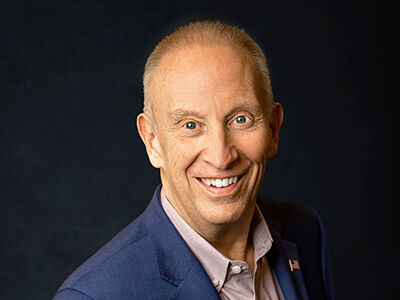Trump has other tariff options if the Supreme Court strikes down his worldwide import taxes
News > National News

Audio By Carbonatix
5:17 PM on Wednesday, November 5
By PAUL WISEMAN
WASHINGTON (AP) — President Donald Trump has warned that the United States will be rendered “defenseless’’ and possibly “reduced to almost Third World status’’ if Supreme Court strikes down the tariffs he imposed this year on nearly every country on earth.
The justices sounded skeptical during oral arguments Wednesday of his sweeping claims of authority to impose tariffs as he sees fit.
The truth, though, is that Trump will still have plenty of options to keep taxing imports aggressively even if the court rules against him. He can re-use tariff powers he deployed in his first term and can reach for others, including one that dates back to the Great Depression.
“It’s hard to see any pathway here where tariffs end,” said Georgetown trade law professor Kathleen Claussen. “I am pretty convinced he could rebuild the tariff landscape he has now using other authorities.”
At Wednesday’s hearing, in fact, lawyer Neal Katyal, representing small businesses suing to get the tariffs struck down, argued that Trump didn’t need the boundless authority he’s claimed to impose tariffs under 1977 International Emergency Economic Powers Act (IEEPA). That is because Congress delegated tariff power to the White House in several other statutes — though it carefully limited the ways the president could use the authority.
“Congress knows exactly how to delegate its tariff powers,’’ Katyal said.
Tariffs have become a cornerstone of Trump's foreign policy in his second term, with double-digit “reciprocal’’ tariffs imposed on most countries, which he has justified by declaring America’s longstanding trade deficits a national emergency.
The average U.S. tariff has gone from 2.5% when Trump returned to the White House in January to 17.9%, highest since 1934, according to calculations by Yale University's Budget Lab.
The president acted alone even though the U.S. Constitution specifically gives the power to tax – and impose tariffs – to Congress.
Still, Trump “will have other tools that can cause pain,’’ said Stratos Pahis of Brooklyn Law School. Here’s a look at some of his options:
The United States has long had a handy cudgel to wallop countries it accuses of engaging in “unjustifiable,’’ “unreasonable’’ or “discriminatory’’ trade practices. That is Section 301 of the Trade Act of 1974.
And Trump has made aggressive use of it himself — especially against China. In his first term, he cited Section 301 to impose sweeping tariffs on Chinese imports in a dispute over the sharp-elbowed tactics that Beijing was using to challenge America’s technological dominance. The U.S. is also using 301 powers to counter what it calls unfair Chinese practices in the shipbuilding industry.
“You’ve had Section 301 tariffs in place against China for years,'' said Ryan Majerus, a partner at King & Spalding and a trade official in Trump's first administration and in Biden's.
There are no limits on the size of Section 301 tariffs. They expire after four years but can be extended.
But the administration’s trade representative must conduct an investigation and typically hold a public hearing before imposing 301 tariffs.
John Veroneau, general counsel for the U.S. trade representative in the George W. Bush administration, said Section 301 is useful in taking on China. But it has drawbacks when it comes to dealing with the smaller countries that Trump has hammered with reciprocal tariffs.
“Undertaking dozens and dozens of 301 investigations of all of those countries is a laborious process,’’ Veroneau said.
In striking down Trump’s reciprocal tariffs in May, the U.S. Court of International Trade ruled that the president couldn’t use emergency powers to combat trade deficits.
That is partly because Congress had specifically given the White House limited authority to address the problem in another statute: Section 122, also of the Trade Act of 1974. That allows the president to impose tariffs of up to 15% for up to 150 days in response to unbalanced trade. The administration doesn’t even have to conduct an investigation beforehand.
But Section 122 authority has never been used to apply tariffs, and there is some uncertainty about how it would work.
In both his terms, Trump has made aggressive use of his power — under Section 232 of Trade Expansion Act of 1962 — to impose tariffs on imports that he deems a threat to national security.
In 2018, he slapped tariffs on foreign steel and aluminum, levies he’s expanded since returning to the White House. He also plastered Section 232 tariffs on autos, auto parts, copper, lumber.
In September, the president even levied Section 232 tariffs on kitchen cabinets, bathroom vanities and upholstered furniture. “Even though people might roll their eyes’’ at the notion that imported furniture poses a threat to national security, Veroneau said, “it’s difficult to get courts to second-guess a determination by a president on a national security matter.’’
Section 232 tariffs are not limited by law but do require an investigation by the U.S. Commerce Department. It’s the administration itself that does the investigating – also true for Section 301 cases — “so they have a lot of control over the outcome,’’ Veroneau said.
Nearly a century ago, with the U.S. and world economies in collapse, Congress passed the Tariff Act of 1930, imposing hefty taxes on imports. Known as the Smoot-Hawley tariffs (for their congressional sponsors), these levies have been widely condemned by economists and historians for limiting world commerce and making the Great Depression worse. They also got a memorable pop culture shoutout in the 1986 movie “Ferris Bueller’s Day Off.’’
Section 338 of the law authorizes the president to impose tariffs of up to 50% on imports from countries that have discriminated against U.S. businesses. No investigation is required, and there’s no limit on how long the tariffs can stay in place.
Those tariffs have never been imposed — U.S. trade negotiators traditionally have favored Section 301 sanctions instead — though the United States used the threat of them as a bargaining chip in trade talks in the 1930s.
In September, Treasury Secretary Scott Bessent told Reuters that the administration was considering Section 338 as a Plan B if the Supreme Court ruled against Trump’s use of emergency powers tariffs.
The Smoot-Hawley legislation has a bad reputation, Veroneau said, but Trump might find it appealing. “To be the first president to ever use it could have some cache.’’
____
Associated Press Staff Writer Lindsay Whitehurst contributed to this story.








